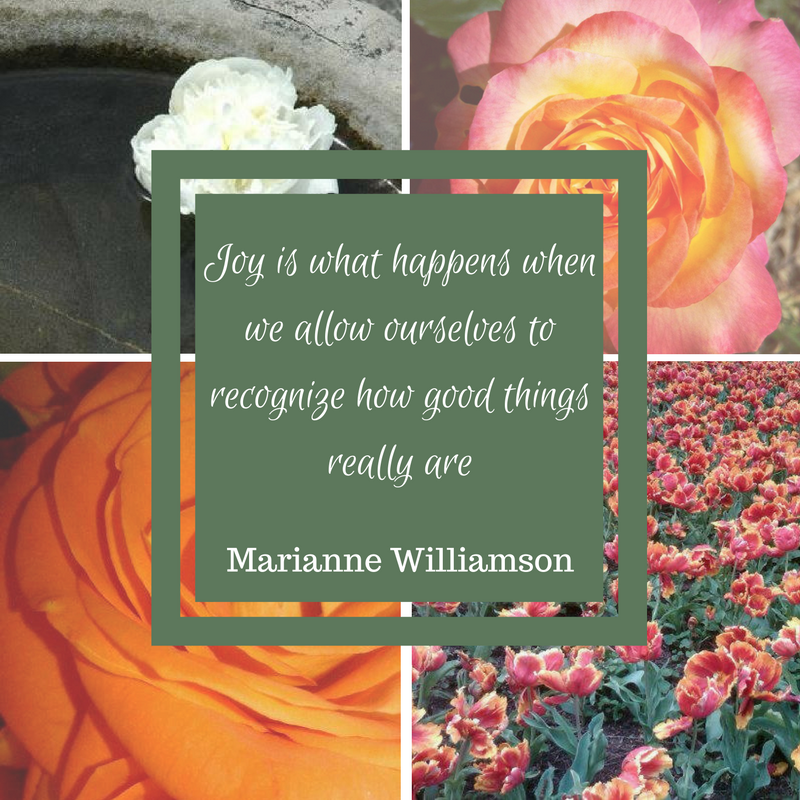I can remember the moment it first occurred to me to be conscious in my gratitude. It was the year after I graduated from college–the realities of adult life were tossing hand grenades into my bunker left and right. I was a mess. I was sitting in this rundown school gym, in a beige folding chair rusted at the hinges, waiting for an elementary school holiday concert to start. My job as a reporter had me in and out of holiday concerts  almost every night that December. I missed my friends and the easy provisions of college life. Lonely and sad, I knew I was seriously sucking at being a reporter.
almost every night that December. I missed my friends and the easy provisions of college life. Lonely and sad, I knew I was seriously sucking at being a reporter.
As I sat in that gym feeling sorry for myself, some inner “me” picked its head up off the proverbial desk of life and said, “Oh, would you shut up!” It suddenly occurred to me that I had so many things to be grateful for. I know it sounds cheesy, but right then and there I made my first list, 10 things that I am thankful for right now. Since that day, I’ve been a practitioner of gratitude and I’ve never had so many things to be grateful for.
[typography font=”Buda” size=”38″ size_format=”px” color=”#42b85e”]Gratitude as a Science[/typography]
Dr. Robert Emmons is considered the world’s leading expert on the science of gratitude. A study he conducted with Dr. Michael McCullough of the University of Miami showed the positive effects of gratitude on a person’s psyche. In a study, they asked one group of people to write a daily thankfulness journal, a second group to write a daily annoyance journal, and the third to simply journal with no focus. They found that after 10 weeks, those who journaled about gratitude were more optimistic and satisfied with their lives. They also found that these people were more likely to exercise and less likely to visit the doctor.
 Studies conducted by other scientists reported similar results. One found that couples who take the time to express their gratitude for their partner were not only happier in their relationship, but more likely to discuss issues with their partner. A Harvard Medical School publication talks about how researchers at the University of Pennsylvania’s Wharton School found that workers who felt appreciated had a 50 percent increase in productivity compared to their unappreciated peers.
Studies conducted by other scientists reported similar results. One found that couples who take the time to express their gratitude for their partner were not only happier in their relationship, but more likely to discuss issues with their partner. A Harvard Medical School publication talks about how researchers at the University of Pennsylvania’s Wharton School found that workers who felt appreciated had a 50 percent increase in productivity compared to their unappreciated peers.
[typography font=”Buda” size=”38″ size_format=”px” color=”#42b85e”]5 Ways to Practice Gratitude Today[/typography]
[typography font=”Buda” size=”18″ size_format=”px” color=”#09854d”] 1. Keep a Journal[/typography]
Journaling is a habit prescribed for all kinds of practices. The neat thing about journaling your gratitude is that it gives you a chance to look back at what you were grateful for last year, or five years ago. Journaling helps you better understand where the journey has taken you. It is also a way for you to push yourself in your practice of gratitude. Challenge yourself to not repeat your entry, or to more thoroughly explore the one thing you are most thankful for.
[typography font=”Buda” size=”18″ size_format=”px” color=”#09854d”] 2. Take a Walk[/typography]
Spend 20 minutes taking your kids for a walk. Or, if you can, take 20 minutes for yourself. As you walk, think about what you are thankful for, breathe, and smile. Spirituality&Health writes, “Pay attention to your senses—everything you’re seeing, hearing, feeling, smelling, and maybe even tasting—and see how many things you can find to feel grateful for. This is a powerful way to shift your mood and open to the flow of abundance that always surrounds you.”
[typography font=”Buda” size=”18″ size_format=”px” color=”#09854d”] 3. Have Dinner[/typography]
Take a minute around the dinner table to share something you are grateful for. This works gratitude into your day and is a great way to get your family involved. Growing up, my sister was always grateful for horses. Just imagine the adorable things your little one might be grateful for–you might even consider keeping track for posterity. This is also an opportunity for you as a mom to lead by example. Want your kids to be more appreciative? Show your kids how to be thankful and the sorts of things we should all be thankful for.
[typography font=”Buda” size=”18″ size_format=”px” color=”#09854d”] 4. Write a Letter[/typography]
In the article, 9 New Ways to Practice Gratitude by StrateJoy, the author suggests writing a handwritten letter to show appreciation for people who have made an impact on your life. Is there a teacher who went the extra mile? How about a midwife who made your first pregnancy just a little less scary? By taking a minute to tell them how they impacted your life for the better, you are giving them the gift of knowing that they have touched a life. And, by considering the gift of their presence in your life, you are also giving a gift to yourself.
[typography font=”Buda” size=”18″ size_format=”px” color=”#09854d”] 5. Be Thankful for Hard and Simple Things[/typography]
Every day we gripe about those little annoyances and boring moments. Finding a way to be thankful even for these is a huge step in adjusting your thinking. Annoying traffic can transform into getting the chance to enjoy the early morning beauty on your commute. You get an opportunity to give a creative gift when you don’t have the money for your friend’s birthday. Positive thinking in your day-to-day life is the foundation of creating a positive, gratitude-based life.










